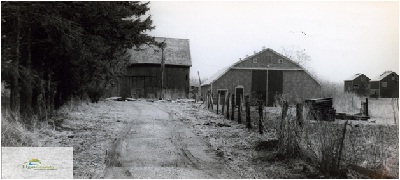Decline

The neglected Kauzen tobacco farm near West Lorne in May 1977.
West Lorne Sun and Rodney Mercury fonds, C9 Sh6 B2 F1977 108.
The modern era of the tobacco industry in Elgin County is one marked by further decline and a movement away from tobacco to new and more profitable crops. After industrialization and mechanization of the farming process, family farms began to disappear in the 1970s and 1980s to be replaced with large commercial tobacco producers.
Further, demand for tobacco found itself in a steady decline as health concerns began to dominate government policy. The anti-smoking lobby highlighted the health concerns associated with smoking and caused demand to decline among the public. Meanwhile, government anti-smoking incentives increased significantly. Restrictions on smoking in public places began to appear, severe restrictions on advertising were implemented, age limits on smoking were introduced, taxation on tobacco products were increased significantly, and finally, public awareness campaigns to educate on the harms of smoking were introduced. These government actions served to further damage the tobacco industry in Elgin County.
The final "nail" in the coffin for many tobacco farmers came during the 1980s when a combination of weather and disease coupled with historically high interest rates caused many to experience financial hardship. In 1979, blue mould destroyed nearly half of Ontario's tobacco crop. Three years later, in 1982, an early frost devastated many crops. These two events forced many farmers to refinance their mortgages or seek loans to fund the next year's planting of crops. These loans were at drastically high interest rates of 20%+ and forced many tobacco farmers out of business. Added to this financial hardship was the unpredictability of future tobacco demand which devalued the worth of these farms.
For many farmers only two options remained: sell their farms or switch to a more stable crop. This shift is seen in the decline of tobacco quota holders between 1981 and 1986. In five years, 28% of quota holders disappeared, either switching crops or getting out of farming all together. Recognizing the change in demand for tobacco, government programs were set up to help farmers cope. The Tobacco Transition Reduction Initiative offered to buy tobacco quota from farmers and was an attractive incentive for older farmers looking to retire from farming. Meanwhile, for younger farmers who relied on the industry for their livelihood, the Ontario Ministry of Agriculture and Food established the Transition Crop Team in 1986. This program sought to find profitable, alternative crops to tobacco for Ontario farmers. Sweet corn, industrial hemp, peanuts and wheat grass were among the new crops introduced into the region, which had potential to be profitable. However, because these are niche products they require much more marketing than tobacco and remain less profitable to this day.
Other transition programs occurred in 2005 and, most recently, in 2009. The quota system was abolished and the federal government offered to compensate farmers for their quota in exchange for them giving up their eligibility to apply for the new license system. This amounted to an average of $275,000 per "buyout". All but 18 quota owners took advantage of this, effectively bringing about the end of traditional flue-cured tobacco production. Though some farmers were able to keep working in tobacco by renting their land and services to license holders, many have sold their equipment, knocked down their greenhouses and have rented their land or moved on to other crops.
Tobacco in
Elgin County :
Production :
- Preparation
- Transplanting
- In The Field
- Harvest
- Into the Kiln
- Flue-Curing
- Baling
- Crop Damage
- The Workers